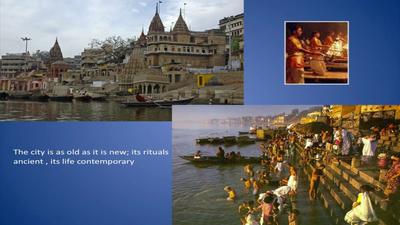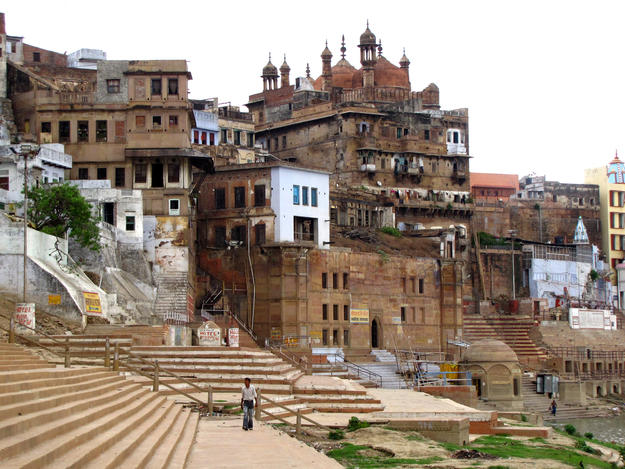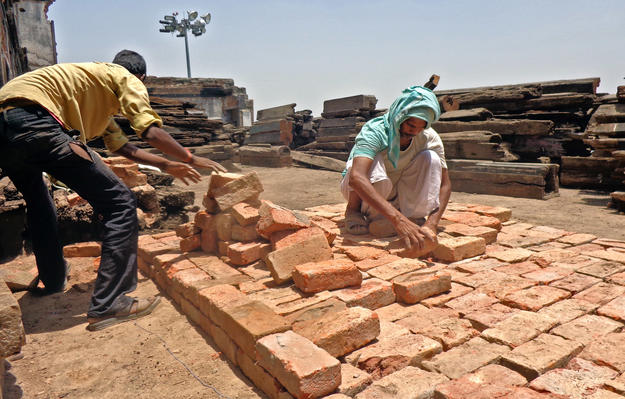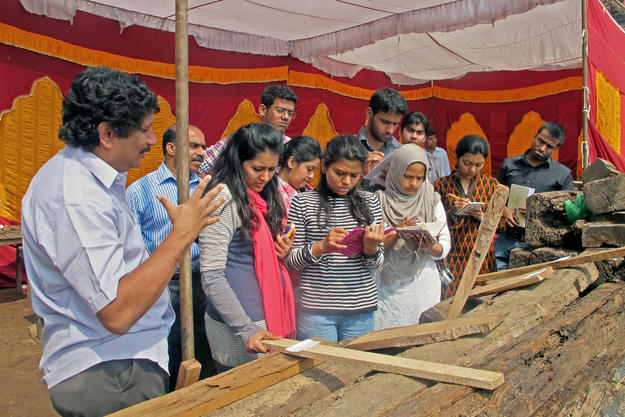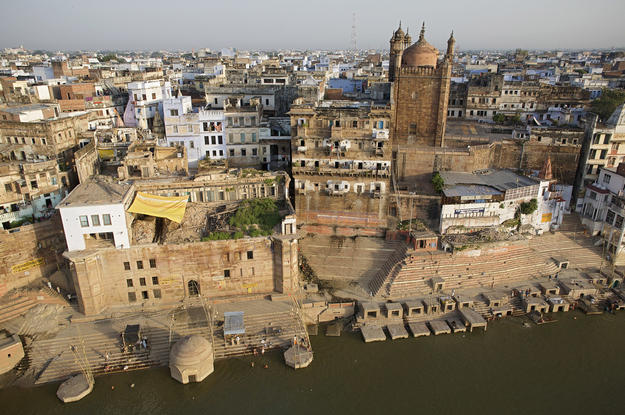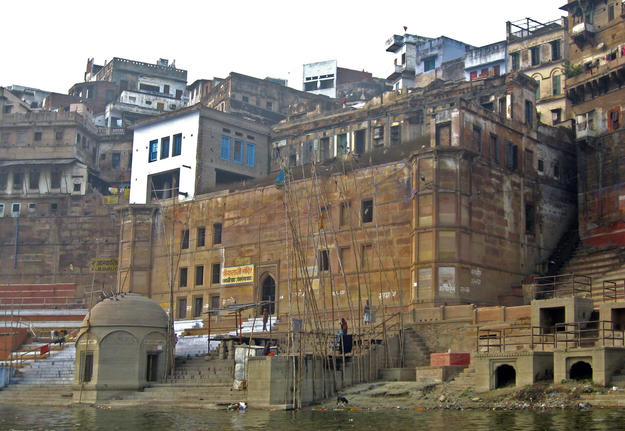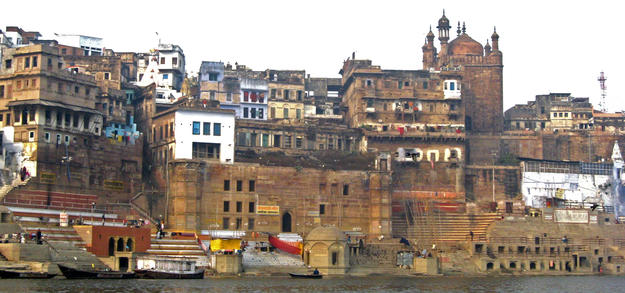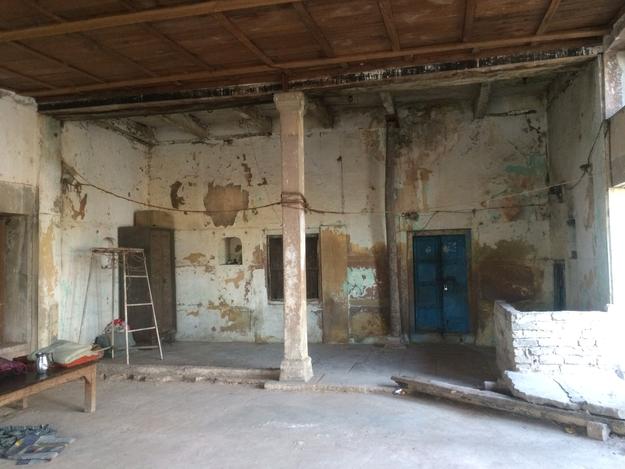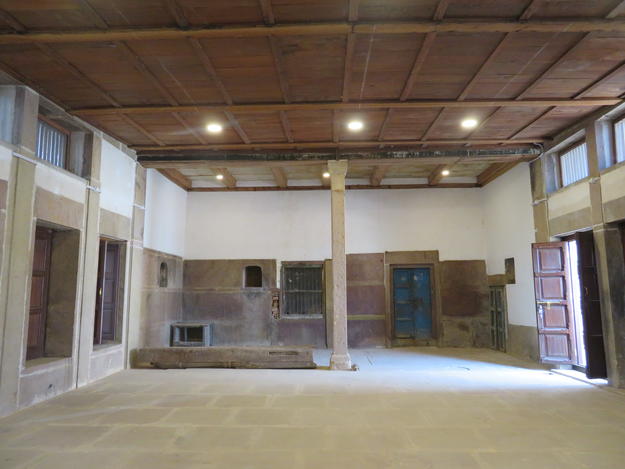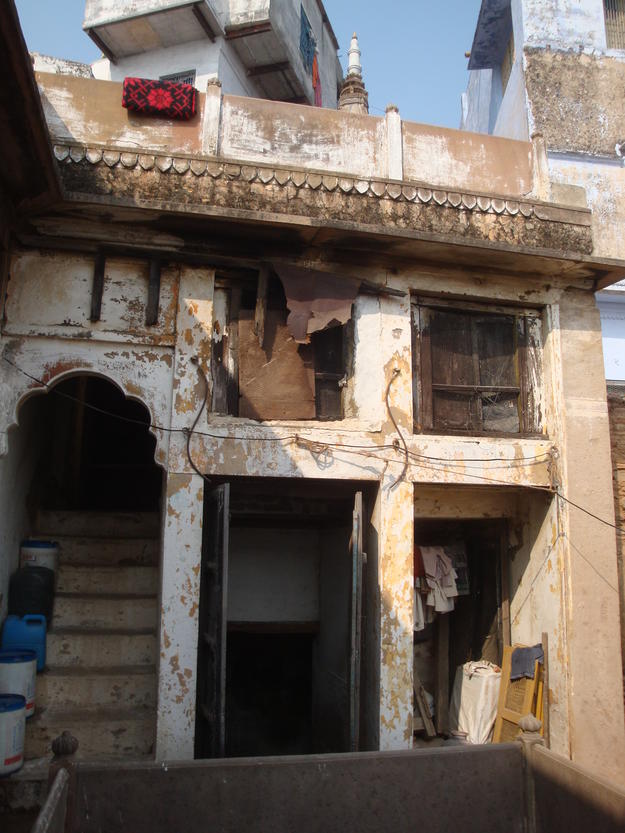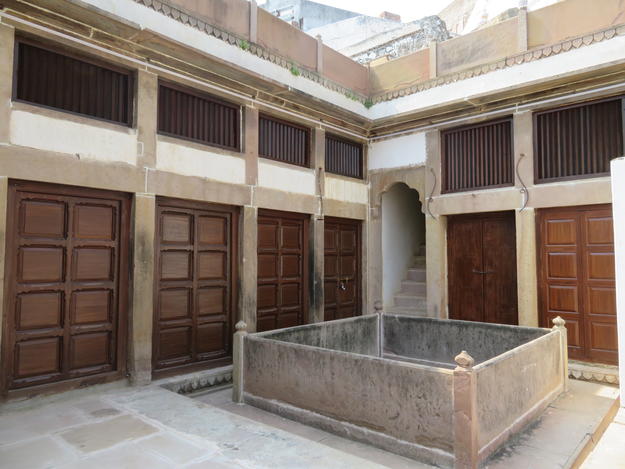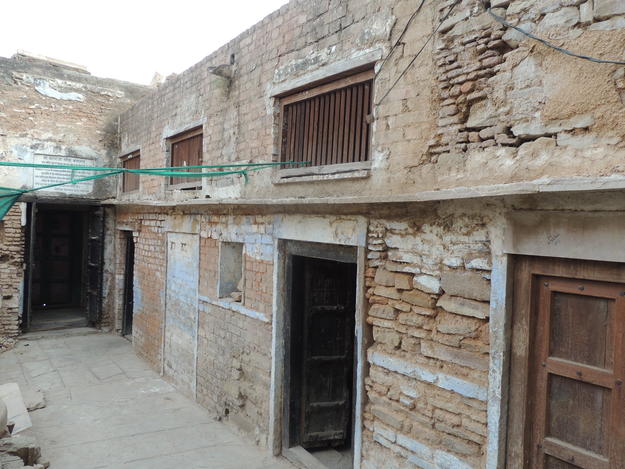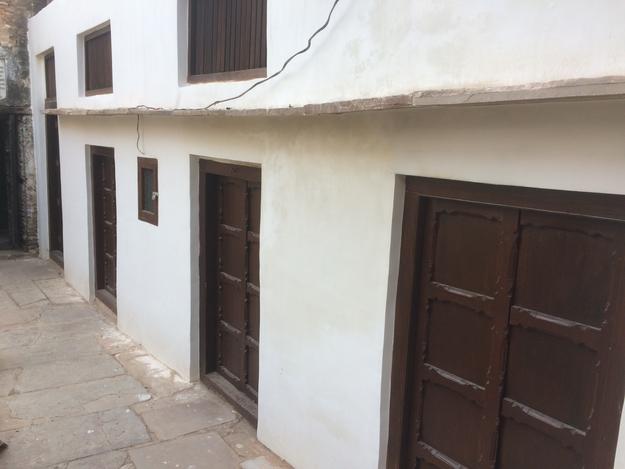Balaji Ghat
2012 World Monuments Watch
Balaji Ghat, on the banks of the Ganges River in Varanasi, is one of the world’s oldest continuously occupied cities and a sacred destination for Hindu pilgrims. The term ghat refers to the steps leading down to the sacred river; the buildings at the top of these steps are also referred to as ghats. They were designed to serve pilgrims from all levels of society who came to Varanasi for ritual purposes. Ghats continue to serve these traditional functions and to define Varanasi’s urban landscape along the riverbank. Balaji Ghat is particularly significant as it once housed the Banaras Gharana, or school of music, attracting students from all over India. The complex was originally a seven-story building and followed a traditional ghat plan, with a rectangular enclosure, a temple, garden, well, assembly hall, living areas, courtyards, and stone staircases, together forming a remarkable architecture ensemble.
Establishing Balaji Ghat's reuse as a cultural center for the community
Lack of maintenance, combined with the impact of heavy use and international tourists, has led to Balaji Ghat’s deterioration. Further, the main portion of the building experienced two major collapses in 1999, and immediate restoration work was necessary to prevent further deterioration. In 2012, the first phase of work at Balaji Ghat began. Seven hundred tons of debris were removed from the collapsed portion of the structure and examined to determine which pieces could be re-used when reconstruction began. With assistance from American Express, the architectural significance was retained and interior spaces were refurbished in 2016, and a program was implemented to increase public awareness of Balaji Ghat and establish its reuse as a cultural center for the community. The second phase of the restoration is in-progress and scheduled to be completed in 2018. Balaji Ghat is a sacred pilgrimage Hindu site that is culturally significant to the local and Hindu community and has been a center of study of traditional sacred music that was founded in the thirteenth century, and remains a testimony of living traditions today. The restoration of the building for the adaptive reuse helps maintain it for public use.
Videos

